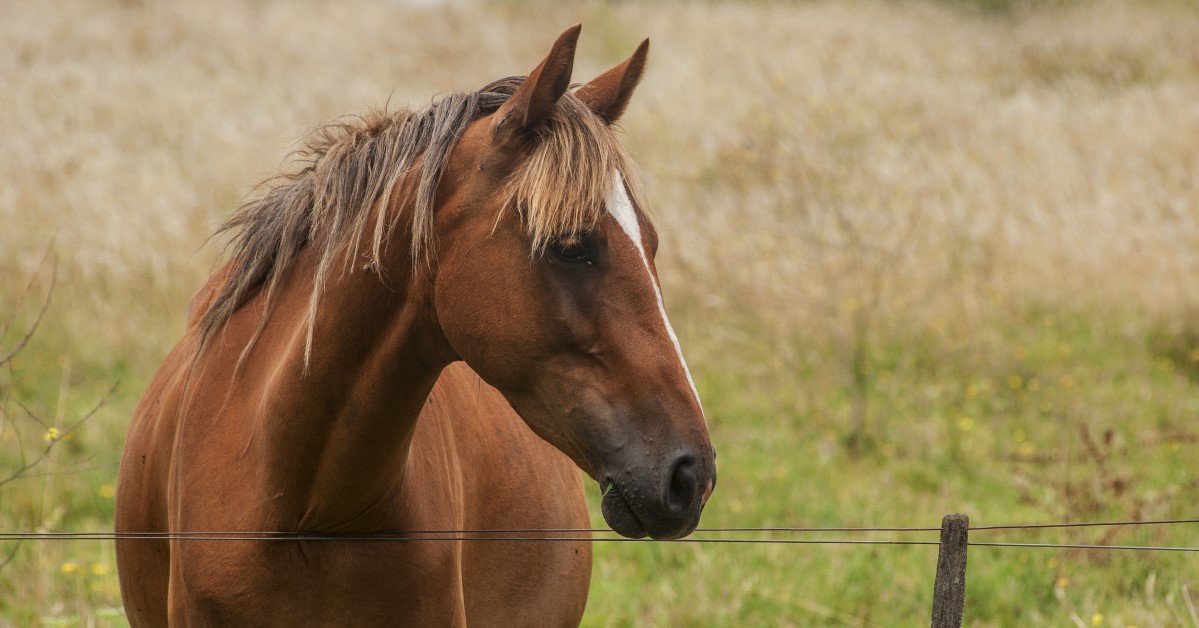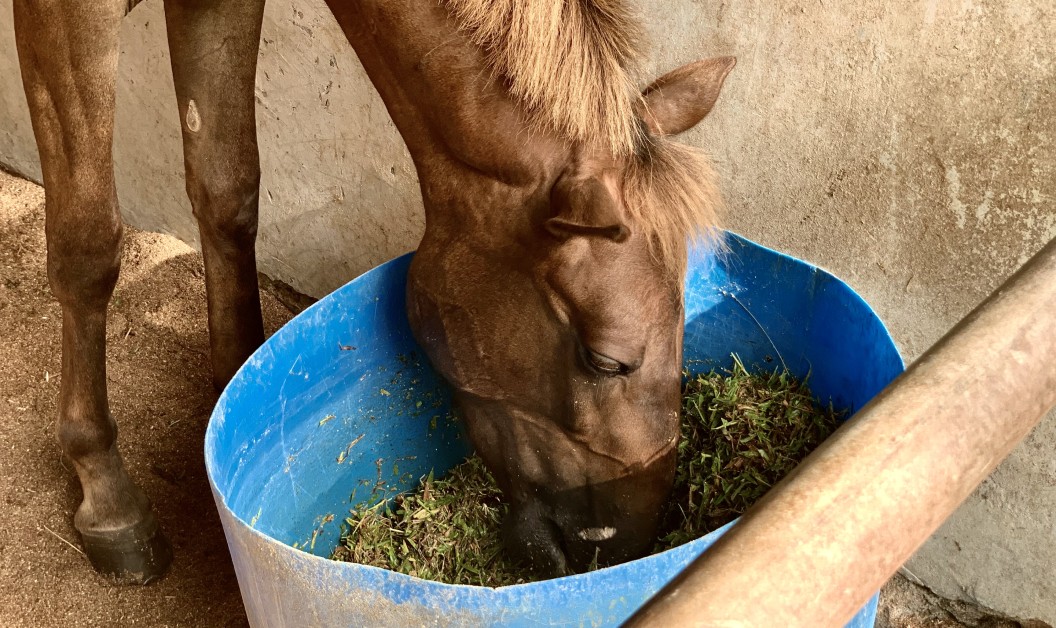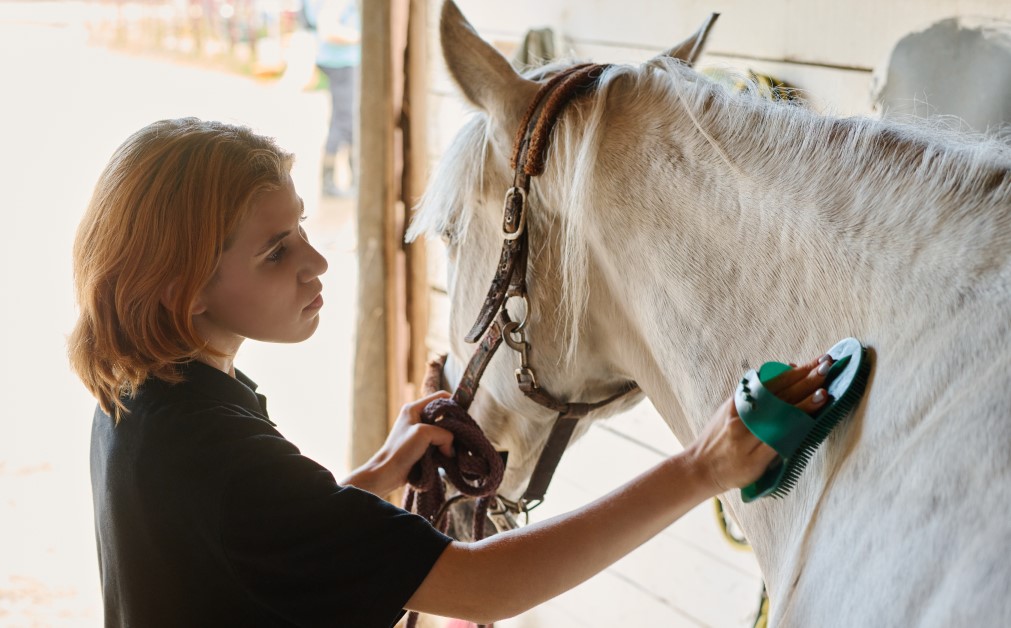What to Do if Your Horse Goes Blind
Did your horse recently become blind? Here are a few tips on how to take care of your blind horse!

Your horse has become blind. Is it the end of the world? You’ll hear a lot of things from a lot of “well-meaning” folks, most of whom will tell you to euthanize your horse for any myriad of reasons, including:
- He’s dangerous
- He’ll get hurt
- You’ll get hurt
- He’ll damage things.
- You won’t be able to control him.
- You’ll never be able to do anything with him again.
And on and on. Well, guess what? None of these things is true if you manage your horse’s new state with love, care, and information from experts.
Blindness Onset
How do you know if your horse is going blind? You’ll at first notice subtle signs like he’ll be reluctant to go places he normally went with no problem, or when you are riding, your otherwise solid and brave horse becomes spooky for no apparent reason. The more you are psychically in tune with your horse, the sooner you’ll notice the signs of his impending blindness.
The question to guide you on how to proceed is, did your horse become blind gradually, or did he become suddenly and catastrophically blind due to illness or injury? The answer to this question makes a big difference in how you should help him adjust to his condition. If your horse becomes blind suddenly, the signs are obvious, but the degree of how he handles it varies greatly depending on his personality. A horse who is laid back and calm in most situations will adjust quickly with your support and care. A high-strung and skittish horse will probably have a harder time adjusting to his condition, especially if the blindness comes on suddenly. He may be terror-stricken and react with pure panic. It is this horse that you’ll get all sorts of advice about, and maybe it may ultimately prove to be true, but consider too that giving him more time with your kindness and support may be what he needs to settle down and accept his disability.
Talk and Touch
Talk to your horse. Talk to him a lot. And when you’re not talking, touch him, only after you’ve told him where you are. Better yet – talk and touch. Think about your grooming sessions. This is a wonderful time to support your horse and make your bond with him even stronger. When you clean his hooves, run your hand along his back and down his leg to pick up the next one after cleaning the first front one. You’ll find he will listen to you attentively as well as appreciate your touch.
Leading him those first few times will probably make you feel anxious, but the more confidence you can muster, the more secure your horse will feel. It’s important to give him plenty of space on both sides to prevent him from knocking into something and becoming scared. Make your turns nice and wide. Take it slow and tell him to “step up” if he’s coming to a spot where he needs to lift his feet. If you see he’s getting agitated, stop for a few moments, pet him, and talk softly to him. When you start forward again, make sure you go slowly.
Your Feelings
When first dealing with your blind horse, you may feel wary and even frightened. This is perfectly normal. Have faith that the more time you spend together, the more confidence you’ll have in handling him. Spend as much time as you can with him, talking and touching him. The more he comes to trust you and the more consistent you are in caring for him, the more adjusted he will become.
Back with the Herd?
The answer here is unequivocally no! The herd has its own hierarchy, and a horse that is handicapped will instantly fall to the bottom of the pecking order. The “bully” of the herd is likely to give chase to the blind horse, who will then run in panic, setting the stage for running into a tree, the fence, or stepping into a hole, all of which have the potential for serious injury.
Pasture Buddies
Your horse is not doomed to spend the rest of his sightless days alone. Find him a docile, easy-going horse, mule, or goat to become his buddy, and you’ll be amazed at how quickly and firmly they bond. Your horse will stick to his buddy’s side no matter what. You might even consider putting a bell on his buddy’s halter. Just make sure it’s just the two of them in your designated enclosure.
Pasture Protocols
The idea of putting a blind horse out to pasture is not universally agreed upon, but with definite protocols and modifications, your blind horse and his buddy should do just fine. Safety is the key, and here are some ways to ensure the pasture is safe for your horse and his buddy.
- Remove all barbed wire fencing and replace it with woven or smooth wire fencing.
- Clear the pasture of fallen trees, old machinery, or other large items.
- Comb the pasture for a woodchuck or other holes and fill them in completely.
- Remove or cut down anything low hanging that could be a hazard.
- Surround utility or other poles with rubber tires that are filled with sand or dirt to protect your horse if he runs into them.
- Take a close look at everything in the pasture to make sure nothing can hurt your horse.
- Before you put your horse in the pasture alone for the first time, lead him around the entire enclosure, tapping on everything along the way. You’ll be surprised at how this exercise helps him imprint his surroundings.
Can You Ride Again?
Some people will think the answer to this is a resolute no. Some of those people may be right, but not all. If you and your horse were riding buddies before, there’s no reason why you can’t enjoy the times you once spent together again. But the answer lies between you and your horse. You both need to have levels of trust and confidence individually and in each other. You will also need to take it slow – similar to how you would ride a newly trained horse.
Remember, when you go to tack him up, he can’t see the saddle and bridle, so let him smell each item first and put them on slowly. You might want to leave it at that for the first few times before you get on him.
Enlist the aid of a helper the first time or two you get on him and ask her to lead him while you sit firmly in the saddle with your legs pressing easily against his side. After a time or two of this, go it alone, in an enclosed area, and with your helper nearby.
So, try not to listen to what everyone tells you to do and listen to your gut and your horse. The final decision on what to do is up to the two of you.
Ready to start saving money on pet wellness care?
Then take a look at Mint Wellness, the pet wellness plan that provides fast reimbursement on routine pet care. Save on vaccinations, wellness exams, preventatives, dental, and more!
Learn More

